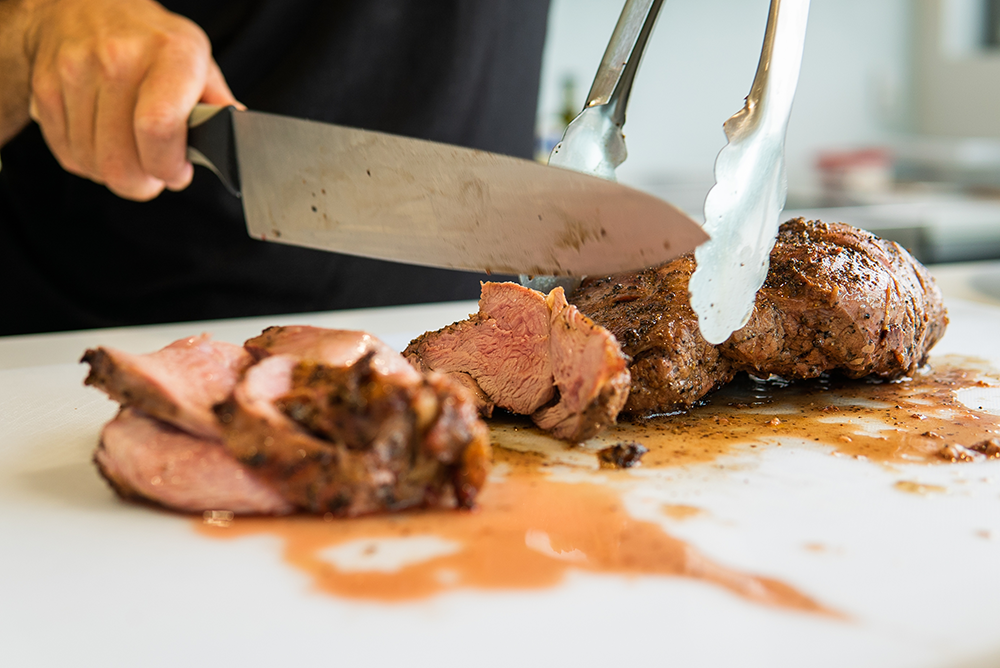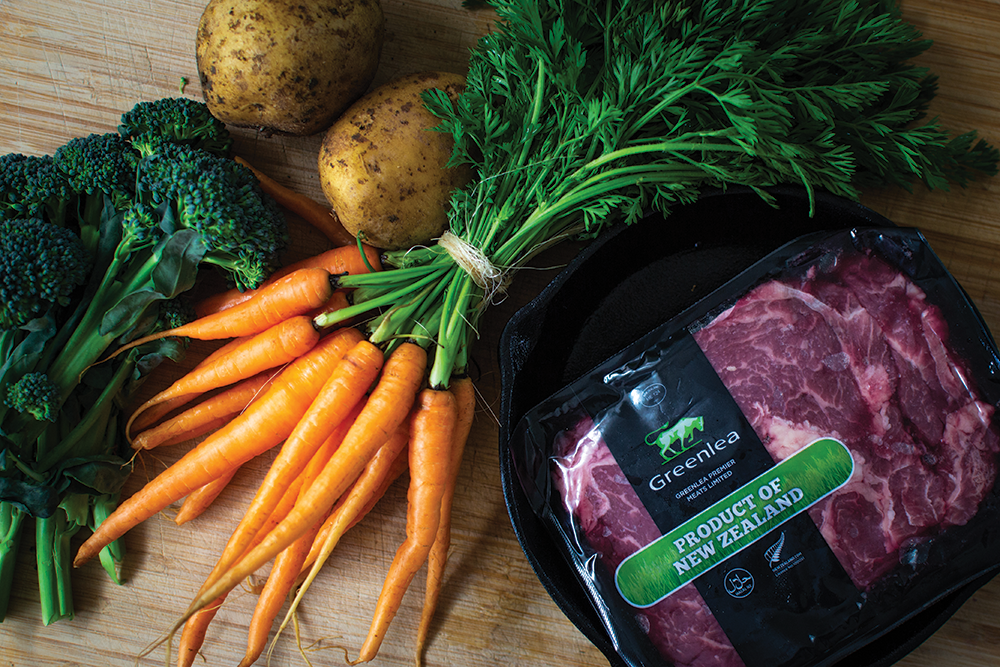What Makes New Zealand's Meat the Best in the World?

If you've talked to restauranteurs about the produce they choose, overseas friends or any foodie, you know that New Zealand meat is the best of the best - but what is it that we do to make it the best in the world? We talked to an expert from Greenlea Butcher Shop to find out.
This article was created in partnership with Greenlea Butcher Shop
Producing 50,000 tonnes of beef per year, family owned Greenlea Premier Meats is the fourth largest New Zealand beef exporter. Greenlea is the company behind the online Greenlea Butcher Shop.
The Egan family started in the meat industry in a small butcher shop in Gisborne before launching Greenlea in the Waikato in 1993. While 95% of their product goes overseas, you may have seen them on the shelves at Farro Fresh and Moore Wilson. In 2017, they launched their online butcher shop, known as the Greenlea Butcher Shop, to sell their own beef to Kiwis as well as Ovation lamb and First Light venison.

So what makes it better than what the rest of the world is producing?
According to Julie McDade, the Business Development Manager at Greenlea, who also happens to have a Doctorate in Veterinary Medicine, there are a few factors that make their meat stand out.
In Aotearoa, we take the image of healthy looking cows grazing in vast and grassy fields for granted but elsewhere in the world, that just isn't how beef is produced.
To compare, the majority of cows in the world are raised or finished in 'feed lots'. They're fed grain or corn to fatten them (which, Julie adds, aren't foods that the animals would naturally come across) and they're kept in small areas that don't allow them to roam around. These conditions mean that the animals are given routine antibiotics to prevent disease outbreaks. On such a large scale, that can lead to antibiotic resistant bacteria. As well as that, preslaughter stress results in glycogen breakdown leading to higher pH and drier meat in the end product. Simply, those conditions, which are the norm in worldwide beef production, lead to inferior meat.
In contrast to many parts of the world, New Zealand has welfare standards for animals and a strict Code of Welfare for Livestock.

Not all beef in New Zealand is created equal, but Greenlea sources all its cattle from farms where cattle are grazed on grass in open pastures where they are free to roam. This results in less stressed, healthier animals so the resulting meat is tender, juicy and flavourful steaks that are of course, antibiotic free.

Greenlea also ensure that once the meat is on its way to you, it is chilled - but never frozen. They do this because when meat is frozen, the water in the muscles turns to ice and destroys the cell and fibre structure, resulting in meat with a mushier testure. Avoiding freezing ensures that the structure of the meat is retained.
The care taken of the animals results in better quality meat, which just makes sense. Our welfare laws hold farms to higher standards but those higher standards also seems to be embedded in the way we think about farming: it's part of our nation's identity so we hold the industry to a high standard. The basics of 'grass-fed', 'pasture-raised', 'antibiotic free' and 'chilled not frozen' really do lead to better meat.
And of course, if you don't believe us, you can taste it for yourself.

Greenlea Butchers
Find out more at greenleabutcher.co.nz or shop at greenleabutcher.co.nz/all
latest issue:
Issue #120
As the days become shorter, and the nights cooler, the latest issue is perfectly timed to deliver delicious autumn dishes. From recipes using fresh seasonal produce such as feijoas and apples, to spectacular soothing soups and super-quick after-work meals in our Food Fast section, we’ve got you covered. With Easter on the horizon, we feature recipes that will see you through breakfast, lunch and dinner over a leisurely weekend holiday, and whip up chocolatey baking treats sure to please. We round up delicious dinners for two and showcase a hot new Korean cookbook before heading south to Dunedin to check out all that’s new in food and dining.The latest issue of dish is on sale NOW at all good bookstores and supermarkets – don’t miss it!

